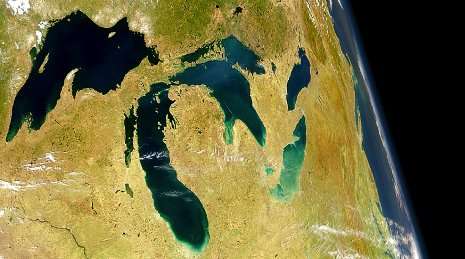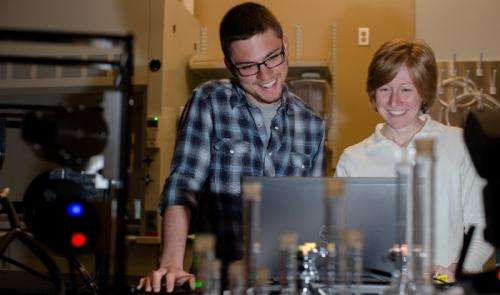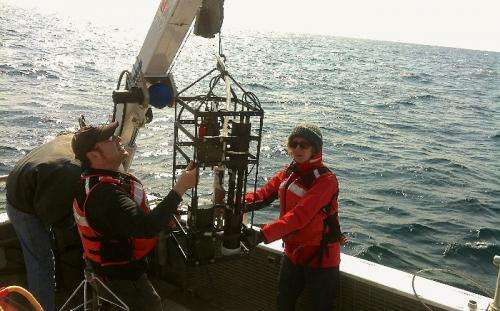One-celled plants key to understanding changes in the great lakes

Colleen Mouw calls herself an oceanographer "with one foot in the ocean and the other in the Great Lakes." An assistant professor in Michigan Technological University's Department of Geological and Mining Engineering and Sciences and the University's Great Lakes Research Center, she is using satellite-based remote sensing technology to develop new and better ways to measure and understand the changes occurring in the Great Lakes.
What changes are surfacing in the Great Lakes? Mouw cites three big ones: warming, increasing clarity due to invasive mussels, and proliferation of harmful algal blooms.
Each Great Lake is quite different from the others—in its optical complexity (color), which is influenced by water depth and surrounding land use. "We are working to develop approaches that work across all the Great Lakes," Mouw explains.
Because her specialty is phytoplankton—single-celled floating plants that convert carbon dioxide into oxygen—Mouw is using satellite data about the phytoplankton communities in the Great Lakes to determine the physical and chemical causes of biological phenomena such as harmful algal blooms.
Phytoplankton are an important part of our global ecosystem. Although they are too small to be seen by the naked eye—about 1/4th the diameter of a strand of human hair—they produce more than half of our planet's oxygen. "They are the base of the aquatic food web," Mouw says. "Their response to environmental change affects aquatic life all the way up the food chain."

Optical satellite signals are based on the colors in the water, which are a combined product of colored dissolved organic matter (similar to steeping tea), detritus and minerals, as well as phytoplankton. Conditions such as the depth and temperature of the water, storm passage, nutrients in the water, and plants and animals living and dying there impact the parameters that an optical satellite sensor detects. Mouw's goal is to use optical signals to analyze satellite data to determine how phytoplankton are responding to variable environmental conditions, over both short and long spans of time.
A lot of satellite data has been collected since a continuous record of aquatic color imagery began in 1997, but because the Great Lakes are optically complex, a lot of challenges remain in interpreting the data. Not only are the waters of each Great Lake diverse in different parts of the lake as well as different from each other, the data retrieved often is dominated by information that is not necessarily the primary focus of the scientists trying to analyze it.

For example, Mouw explains, often what researchers want to know is the chlorophyll concentration in the water, since it provides an estimate of how much phytoplankton is present. However, in Lake Superior, there is more absorption of light by colored dissolved organic matter. That makes it very difficult to detect the portion of the signal that is due to phytoplankton.
"Challenging optical complexity isn't just a Great Lakes issue," Mouw points out. "The tools we are developing can be applied to the coastal ocean as well. Our goal is to place the Great Lakes into the bigger picture of water research priorities across our nation and the globe."
Provided by Michigan Technological University


















